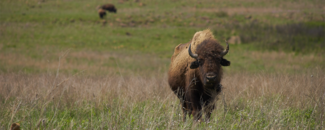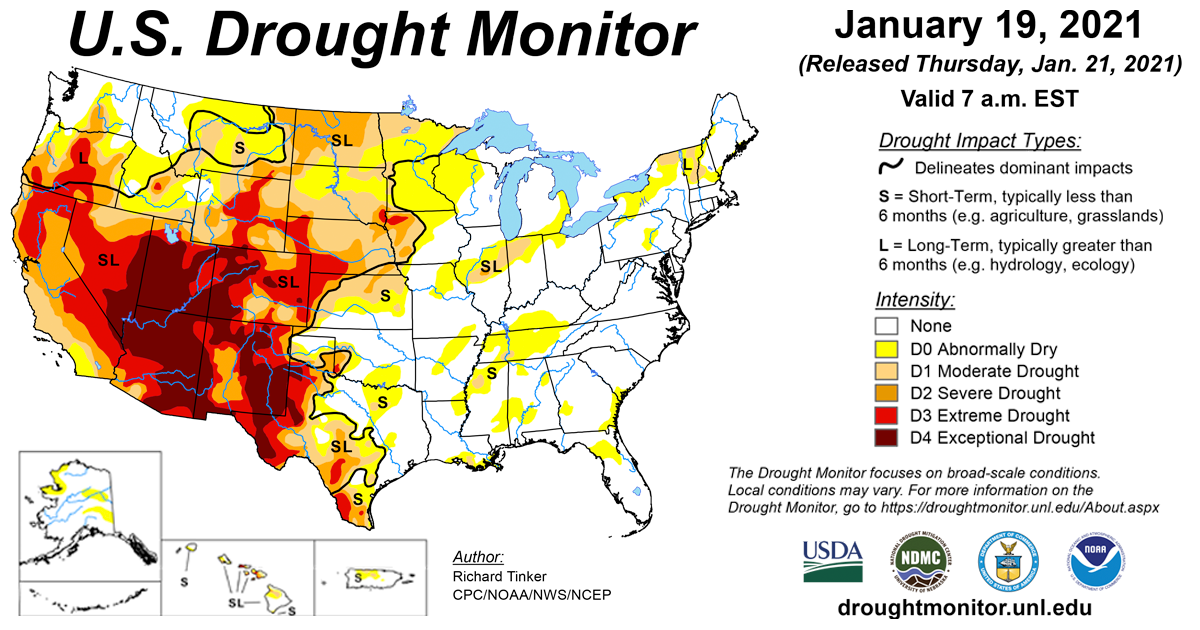
According to the January 19, 2021, U.S. Drought Monitor, moderate to exceptional drought covers 37.6% of the United States including Puerto Rico, a slight increase from 37.5% last week. The worst drought categories (extreme to exceptional drought) also increased slightly from last week’s 17.7% to 17.8%.
The upper-level circulation continued the pattern of a long-wave ridge over the western contiguous United States with numerous Pacific weather systems moving through the pattern in the jet stream flow. These weather systems, or upper-level short-wave troughs, weakened as they crossed the western ridge and were rejuvenated once they reached the Plains and moved eastward. A couple developed into intense closed lows, resulting in a deep upper-level trough over the eastern contiguous United States.
The long-wave ridge kept temperatures warmer than normal across most of the contiguous United States, while the eastern trough brought cooler-than-normal temperatures to parts of the southern Plains and Southeast. The main storm track kept to the north, so above-normal precipitation was confined mostly to the northern tier states while little to no precipitation fell across the southern contiguous United States.
With wet weather mostly in the north, drought and abnormal dryness contracted in parts of the Pacific Northwest and northern Plains, while expansion occurred in other parts of the Pacific Northwest, northern and southern Plains, and Southeast. Drought expansion exceeded contraction, so the overall U.S. drought footprint increased slightly this week.
Abnormal dryness and drought are currently affecting over 117 million people across the United States including Puerto Rico—about 37.7% of the population.

The full U.S. Drought Monitor weekly update is available from Drought.gov.
In addition to Drought.gov, you can find further information on the current drought as well as on this week’s Drought Monitor update at the National Drought Mitigation Center. See their recent news releases.
The most recent U.S. Drought Outlook is available from NOAA’s Climate Prediction Center and the U.S. Department of Agriculture provides information about the drought’s influence on crops and livestock.
For additional drought information, follow #DroughtMonitor on Facebook and Twitter.



